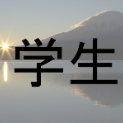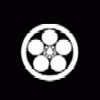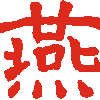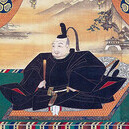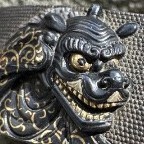-
Posts
994 -
Joined
-
Last visited
-
Days Won
12
Ted Tenold last won the day on April 7 2020
Ted Tenold had the most liked content!
Contact Methods
-
Website URL
http://www.legacyswords.com
Profile Information
-
Gender
Not Telling
-
Location:
Montana no Kuni
Profile Fields
-
Name
Ted Tenold
Ted Tenold's Achievements
-
Mike Z started following Ted Tenold
-
Scogg started following Ted Tenold
-
This is perhaps the most difficult message that I've ever had to write. I am not sure there are suitable words that can appropriately express my devastation and grief. It is with the deepest sorrow that I must share that our friend, our colleague, our mentor, and one of the Nihonto communitys most committed scholars, Darcy Brockbank, has passed away. There is little more information that can be shared at this time, and there will be a great many things for the family and those closest to him to set in order in the coming weeks. While I want to encourage everyone to express their prayers and wishes, I would ask that questions be deferred for the time being to hold some space for those closest to him to process this tragedy, and focus on the tasks now set before them. For those of you that have pending, continuing, or unfinished business matters, please contact me directly. This is truly one of the saddest days of my life.
- 81 replies
-
- 29
-

-

-

-
Christianc started following Ted Tenold
-
Jorge Iruzubieta started following Ted Tenold
-
I have known, and worked with Ray for many years now. I hold him in the highest regard, and beyond reproach. He is reasoned, kind, uber helpful, and compassionate. The fact that the sword was packaged so well and did not suffer damage despite mishandling and temporary loss, shows that he had care and concern for the recipient and the item before trouble even began.
-
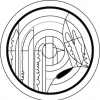
New Gold Tier Subscription/Membership Launched
Ted Tenold replied to Brian's topic in Forum Technical Details and Maintenance
Call it Emeritus tier for Rich. 🙂 -
These are called Hakata Ningyo (博多人形). They were extensively made in many many different themes of people performing daily tasks, folk arts, trades, arts, etc and popular souvenirs in post war Japan.. I have a couple of them also.
-
Nakago appears to be an effort to contrive toward Hankei. Also looks like there may have been a mei removed. The workmanship in the sword looks compromised, disorganized, inconsistent, and I would suspect it is re-tempered.
-
I remember back in the days when I collected Militaria. One of the dealers I visited often had a US Calvary bugle hanging from it's cord and tassle on the wall. It had several bad dings and dent in the brass tubing an old white tag attached to it on which was written; "US Cavaly Bugle. Late 1800's. This bugle was worn by one of George Custer's men during the Battle of Little Big Horn. You can see where the horse stepped on it. It must be true because the fella that sold it to me said so."
-
Finding someone to polish one is possible, but be prepared to pay multiples of the cost per inch ratio. Most owners won't embrace that.
-
That describes pretty much the gamut of Uda and many Hokurikudo swords.
-
I had a sword papered Hozon to Uda Tomotsugu recently. I thought that an unusually direct attribution for a mumei osuriage katana.
-

Naginata blade stuck in shirasaya
Ted Tenold replied to MJS's topic in General Nihonto Related Discussion
Nope, it's counter-intuitive, but it's the opposite. I live in a dryer environment than the swords that come to me are from (Japan). Relative humidity is very low here and they shrink and sieze up. I take them to the humidity of Japan and they expand and loosen up. The difference is that a shirasaya has a hollow center with two walls in cross-section to absorb or lose moisture rather than a solid mass like a plank or board. The shrinkage and expansion occurs effectually from the hollow center out when expanding (absorbing), and to the hollow center when drying (shrinking). It's an effect of mass expanding out or shrinking in. This is also evidenced in old tsuka which have dried out and are very tight, and/or have cracked along the corners of where the nakago sits. -

Naginata blade stuck in shirasaya
Ted Tenold replied to MJS's topic in General Nihonto Related Discussion
Mike, yes, but you have to be careful to determine if the habaki is really the culprit first. Sometimes the interior of the saya at the tip is binding and it may appear the habaki is jamming when it's not. To find out mark the point where the daijiri of the habaki (the end of the habaki that would contact the seppa) on the nakago with light pencil mark, remove the habaki and slowly put the sword back in the saya. If it bottoms out prior to the mark flushing with the koiguchi of the saya, then the habaki may only be part or not at all the problem, and altering the habaki's contact with the koiguchi won't resolve the real issue. -

Naginata blade stuck in shirasaya
Ted Tenold replied to MJS's topic in General Nihonto Related Discussion
I agree with Grey, but I'd go so far as to say submerging is a very bad idea for many reasons. Like everything else, there is a process, and that process is also dependant in the glue that was used being ammenable to rehydrating and releasing. Living in a very dry environment myself, occasionally I encounter a blade that is stuck fast in the shirasaya. The first thing I try is the same method as is normal for removing the tsuka from the sword, but holding the sayajiri end in hand instead of the tsuka. Sometimes that will free it enough to remove it from the saya. Beyond that with a naginata you should have enough proud edge at the koiguchi to use an atekizuchi (hammer and striker tool for removing stuck tsuka). Lay the Naginata flat in on top of a bed or padded counter and use the atekizuchi to dislodge the saya away from the blade. -

NBTHK Shijo Kantei on-line
Ted Tenold replied to Wim V's topic in Sword Shows, Events, Community News and Legislation Issues
I encourage all NBTHK members to submit an answer to this. Enthusiastic participation is the only thing that will generate a motivation to retain it as a regular medium for access to education. In the past, I've heard objections about how difficult it is to navigate to and retrieve the transation, figure out what info goes where on the post card to submit an answer, get the right postage on the card, mail it. How much easier does it get? Submit your answers folks. Your willingness to respond and participate in the effort the Honbu has made to reach out to it's member in a difficult time will show them that these kinds of improvements are valued, effective, and efficient means of communicatig and learning. It's my feeling that if members don't show their appreciation and support by participating in this exercise, then they aren't entitled to complain about not having more on-line access in the future. -
I've known you for many years Guido. You're capable of doing all these at the same time. You've had years of government training! Seriously, Congratulations! Quite the achievement and addition!
-

AOI Art Sword Videos on Youtube
Ted Tenold replied to Lance's topic in General Nihonto Related Discussion
George, all due respect, I recognize, support, and concur you are certainly allowed to like what you like. I agree that sashikomi is a wonderful and pleasing style for swords that are ammenable to it. It can make a yakiba much more conspicuous in *some* types of photographic technique. But please hear me out, as a photographer who primarily focuses (no pun intended, but not sorry for it anyways ) on swords and fittings as subject matter, sashikomi is just as vulnerable to poor photographic techniques as hadori is. They each have to be photographed in specific conditions and set ups to illustrate them and communicate them each fluently. Bad polish or bad photos? Good polish and crappy images? Great looking sword and as photoshopped as a Vogue cover model? YES! Hadori is being applied to swords that it should not be. Again, I concur, and it makes me shake my head every time I see it. Yet when I see a sashikomi on a sword that could clearly benefit from good hadori, again, my head shakes back and forth. I'll answer; from the images, I don't like either one. The habuchi is clearly obvious on the sashikomi, but I can't tell if there are any finer hataraki, and the hada doesn't thrill me. The hada on the hadori looks better, but the hadori on the yakiba doesn't look well done or is perhaps compromised by age. So again, *from the images* neither one thrills me. So because we cannot fully appreciate a three-dimensional artform in a two-dimensional medium, we're stuck choosing from the most obvious visible features instead of the work seen in a unified whole. So looking at two different swords in images that neither can fully illustrate properly and asking which is better, is a bit like asking someone if they can tell from the sound of galloping hooves in the distance if it's a horse or a zebra. I'll also point out that the boshi, in *either* style, are finished in essentially the same process as hadori; with a very thin hazuya that is chosen for it's matching qualities to the particular sword's steel, and clarity of finish to illustrate the boshi. But the same difficulties of seeing activity from a direct 90 degree approach in framing are present and exacerbated by a confined region with a complex lenticular shape, and the oshigata is what defines the things that are in the boshi. The healthier, younger ones, do generally exhibit a habuchi that is more obviously visible, but in all cases, the boshi has to be seen in hand, in angled light, to properly appreciate. Why no "sashikomi" style approach to the boshi to make it more conspicuous then? It's not because the sword is lacking, or the style sells more swords, or it's covering up flaws, but it is arguably a combination of the fact that the right hazuya makes the finest microcrystaline details emerge while providing an even enjoyable aesthetic that define the boshi as the "face" of the blade. That has been done on swords since long before hadori saw the light of day, candle, or lightbulb. Just saying....


